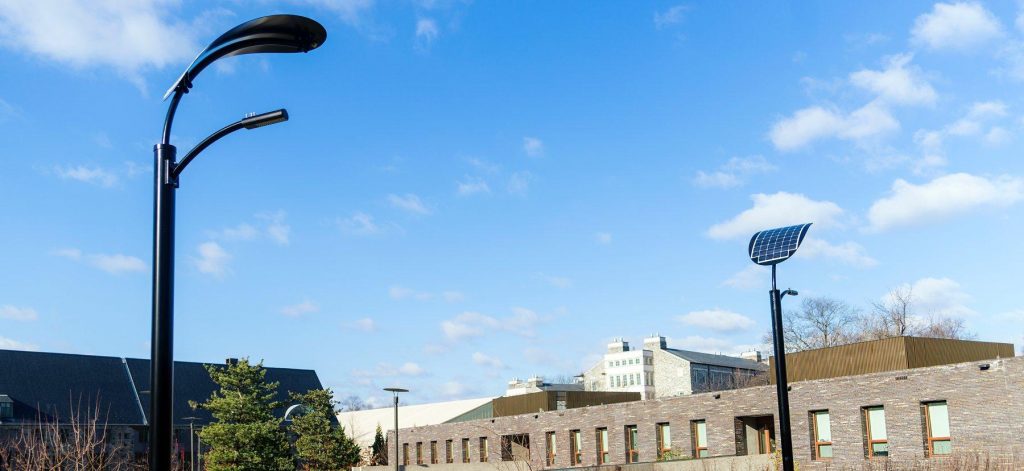More solar street lights are being installed worldwide and are slowly taking over as the way to illuminate the streets at night, but what are their differences? Why are solar street light systems being used now instead of bringing in the electric and using a traditional street light? Here are a few differences and reasons these solar street lights are becoming so popular.
safety
Solar street lights pose no threat to the environment and its people. No fire can be ignited due to a lack of electrical wirings. In addition to that, accidents such as strangulation, overheating, and electrocution will never take place as well. They give off a lower quantity of carbon footprint than that of the traditional lights; thereby, making them eco-friendly.
On the contrary, traditional lights generate illumination merely from electricity which gets disrupted every occurrence of grid failure. The main advantage of solar street lights is it uses renewable energy from the sun, whereas traditional lights rely on electricity generated from nonrenewable fossil fuels and limited by power outages.
Cost-effectiveness
Lifetime Cost If we consider only the purchase price, the initial investment into solar LED street lights is usually two times higher compared to traditional street lights. However over 8-year period, traditional street lights installation, maintenance and electricity cost per unit ranges from 7,000-10,000 USD while solar powered street powered LED light/poles cost is estimated at 3,500-5,000 USD over the same period of time.
Installation Cost
In case of new installations in remote locations, traditional street lights require wiring and underground trenching to connect to grid lines creating enormous additional costs, whereas solar powered LED street lights are much easier to install. You just need to build concrete foundation and to install solar pole. Overall for one solar pole duration of installation is less than one hour. To give you an example about the installation and labor cost of traditional street light, one feet of cabling and trenching costs range from 25USD to 50 USD. Depending on the location of the transformer, you would need at least 30 feet of cabling and trenching for your project. These operations create additional cost but also it is very time consuming which can postpone your project and create other problems.
Maintenance Cost
Maintenance cost is one of the ongoing problem that facility and city managers face when dealing with street lights. The sodium bulbs have a life span of 5 years while LED light life span is more than 10 years. In addition, with the introduction of new “Smart” technologies that allow remote management and control from one central location, maintenance cost of LED street lights are almost 70% less comparing traditional sodium or metal halide lights.
Solar powered LED street light/poles need battery replacement every 5-7 years depending on the battery type (VRLA or LiFePO4) and of course of the battery producer.
Efficiency and luminance
In terms of visibility, solar-powered lights closely simulate the sunlight as they have built-in LEDs. These LED lights give you the option to alter the CRI or color rendering index into the color of light that you desire. This improves visibility at night.
On the other hand, traditional street lights typically possess metal halide lamps within. These high-intensity discharge lamps offer most of their light from the electric arc inside a compact emanation tube. Unfortunately, these cannot beat the visibility that solar-powered lights can provide you with. Solar lamps use LEDs or light-emitting diodes that surpass CFLs or compact fluorescent lamps in harnessing more energy and producing brighter light.
CRI
Metal halide and high pressure sodium lamps provide a much lower CRI (color rendering index) and does not provide the type of lighting our eyes require to distinguish colors. The light tends to be more yellow and difficult to see with. Metal halide lamps provide a standard CRI of 60 and high pressure sodium lamps have a CRI of 25. The sun has a CRI of 100 which is why we can see shapes and colors so well during the day.
Street lights using LED fixtures and solar power have a standard CRI of 66, but LED’s can be colored to match just about any CRI. Tachyonlight’s LED lights can reach high CRI even to 95. They provide better visibility at night by being closest to sunlight provided by a high powered lamp. The LEDs can also be task specific directed with multiple distribution patterns available. This allows for less light pollution into surrounding areas and increased efficiency where the light is needed.
Lifespan
Traditional lights last for approximately an average of 5,000 to 8000 hours or less than a year of usage whereas solar LED lights can live for 5 to 7 years. This notion always puts solar-powered lights ahead of the conventional lights.
The above comparison is enough to indicate which of the two types of street lights are better—it is solar street lights all the way! Most modern solar street lights come integrated with LED lights. The explosively-useful combination of LEDs and solar street lights incorporates the advantages of both the leading technologies of today—namely solar energy and LEDs. Today, lights with smart technology are in demand. There is no doubt that they can provide more than what is needed by users. Solar street lights also encourage activities such as walking, cycling, going to parks, etc.






